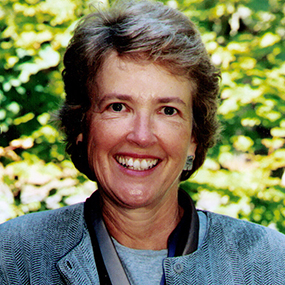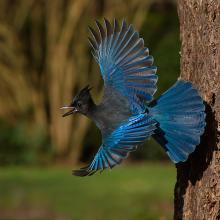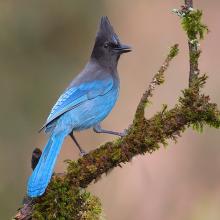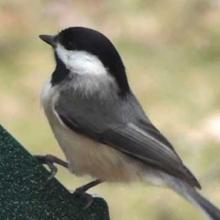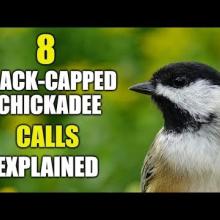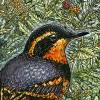

Join BirdNote tomorrow, November 30th!
Illustrator David Sibley and actor H. Jon Benjamin will face off in the bird illustration battle of the century during BirdNote's Year-end Celebration and Auction!
Picture yourself holding a tiny, Black-capped Chickadee like this one. Or a big, blue Steller’s Jay! Volunteer Mark Purcell did just that while learning to net and band birds with the Puget Sound Bird Observatory. “It’s thrilling to see a bird that close,” he says. “You have complete control over this bird, and that’s a unique relationship, but you also want to protect it.” The information banders generate goes into a central database that will help scientists and wildlife managers shape conservation strategies.
BirdNote®
Learning to Band Birds with Puget Sound Bird Observatory
By Chris Peterson
This is BirdNote!
Picture yourself holding a big blue Steller’s Jay! [Call of Steller’s Jay]
Volunteer Mark Purcell did just that while learning to net and band birds with the Puget Sound Bird Observatory. Here’s Mark:
“It’s thrilling to see a bird that close and to feel the heat… You have complete control over this bird and that’s a unique relationship, but also you want to protect it. It’s fun to hold birds but if there wasn’t a larger purpose with the data, I wouldn’t be doing this right!”
It takes days to learn how to handle a bird properly and years of practice to “read” its feathers and its body. You become a detective. Biologist Suzanne Tomassi knows. She’s conducting the training today:
“So let’s take a look at the feathers and see if we can age this bird. We have a first clue right there!”
The group is learning protocols for netting and banding established by the [Institute for Bird Populations’] MAPS program. MAPS stands for Monitoring Avian Productivity and Survivorship. The information banders generate by banding and re-capturing the birds goes into a central U.S. database at the USGS Bird Banding Lab.
“There are partnerships that involve the U.S. Fish and Wildlife Service or banding stations on federal land and they depend upon these data to look at conservation trends and use that to feed into their conservation management strategies. We want to keep common birds common.”
[Steller’s Jay calling]
See photos of the training at our website, birdnote.org.
###
Bird sounds provided by The Macaulay Library of Natural Sounds at the Cornell Lab of Ornithology, Ithaca, New York. Calls of Steller’s Jay [56865] and [105314] recorded by G.A. Keller.
Ambient from coniferous PNW forest Nature Essentials #62 by Gordon Hempton of QuietPlanet.com.
BirdNote’s theme music was composed and played by Nancy Rumbel and John Kessler.
Producer: John Kessler
Executive Producer: Chris Peterson
© 2013 Tune In to Nature.org November 2013 Narrator: Mary McCann
ID# banding-04-2013-11-13banding-04Marantz V Tracks 371, 372, 363, 380, 381
Bird Banders’ Code of Ethics www.pwrc.usgs.gov/bbl/resources/ethics.cfm


